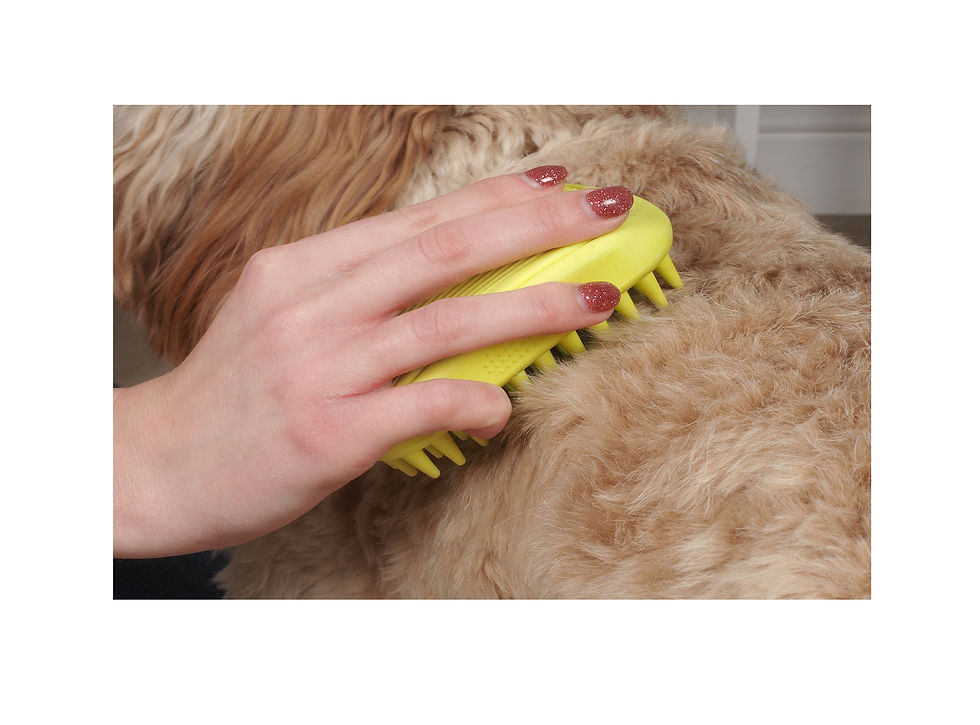Master the Art of Dog Grooming at Home
- Tanya Ogland
- Jul 28
- 4 min read
Taking care of your dog’s appearance and hygiene is essential for their health and happiness. Grooming your dog at home can be a rewarding experience that strengthens your bond and saves money. With the right tools, techniques, and knowledge, you can keep your furry friend looking and feeling their best without frequent visits to the salon.
Essential Home Dog Grooming Tips for Beginners
Starting with home dog grooming can seem daunting, but breaking it down into manageable steps makes it easier. Here are some practical tips to get you started:
Gather the right tools: Invest in a good quality brush suitable for your dog’s coat type, nail clippers, dog-friendly shampoo, conditioner, and a grooming comb. Having everything ready before you begin will make the process smoother.
Create a calm environment: Choose a quiet, well-lit space where your dog feels comfortable. Use treats and gentle praise to keep them relaxed.
Brush regularly: Brushing removes loose hair, dirt, and prevents matting. For short-haired dogs, brushing once a week is enough. Long-haired breeds may need daily brushing.
Bathing: Use lukewarm water and a shampoo formulated for dogs. Avoid human shampoos as they can irritate your dog’s skin. Rinse thoroughly to prevent residue buildup.
Drying: Pat your dog dry with a towel and, if your dog tolerates it, use a low-heat hairdryer. Make sure your dog is completely dry to avoid skin infections.
Nail trimming: Trim nails carefully to avoid cutting the quick, which can cause pain and bleeding. If unsure, seek guidance from a professional.
Ear cleaning: Use a vet-approved ear cleaner and cotton balls to gently clean the ears. Avoid inserting anything deep into the ear canal.

How to Handle Different Coat Types at Home
Different dog breeds have different grooming needs. Understanding your dog’s coat type will help you choose the right grooming routine:
Short-haired dogs: These dogs require minimal grooming. Weekly brushing and occasional baths are usually sufficient.
Double-coated breeds: Dogs like Huskies and Golden Retrievers have a thick undercoat that sheds seasonally. Use an undercoat rake during shedding season to remove loose fur.
Curly or wavy coats: Breeds like Poodles need regular brushing to prevent tangles and mats. Use a slicker brush and comb to keep the coat smooth.
Long-haired dogs: These dogs require daily brushing to avoid mats. Pay special attention to areas behind the ears, under the legs, and around the tail.
Wire-haired dogs: These coats benefit from hand-stripping, a technique that removes dead hair by hand or with a stripping knife. This is best learned from a professional but can be done at home with practice.

What are the Red Flags for Dog Grooming?
While grooming at home is beneficial, it’s important to recognise when professional help is needed or when your dog may be experiencing health issues:
Skin irritation or redness: If you notice persistent redness, bumps, or sores, stop grooming and consult a vet.
Excessive scratching or licking: This may indicate allergies, parasites, or infections.
Unusual lumps or bumps: Any new growths should be checked by a professional.
Nail bleeding or pain: If your dog shows signs of pain during nail trimming, it may be best to seek professional grooming.
Ear discharge or foul smell: These can be signs of ear infections requiring veterinary attention.
Matting that is too tight: Severe mats can cause discomfort and skin problems. If mats are difficult to remove, a professional groomer can safely handle them.
Recognising these signs early helps maintain your dog’s health and comfort.

Tips for Making Grooming a Positive Experience
To ensure your dog enjoys grooming sessions, consider these strategies:
Start young: Introduce grooming early in your dog’s life to build positive associations.
Keep sessions short: Begin with brief grooming periods and gradually increase the time.
Use treats and praise: Reward your dog frequently to reinforce good behaviour.
Be patient and gentle: Avoid rushing or forcing your dog, which can cause stress.
Incorporate play: Make grooming fun by mixing it with playtime or walks.
Stay consistent: Regular grooming helps your dog get used to the routine.
By making grooming enjoyable, you create a trusting relationship and reduce anxiety.
Maintaining Your Dog’s Health Beyond Grooming
Grooming is just one part of keeping your dog healthy. Here are additional tips to complement your grooming routine:
Regular vet check-ups: Schedule annual or bi-annual visits to monitor your dog’s overall health.
Balanced diet: A nutritious diet supports healthy skin and coat.
Exercise: Regular physical activity keeps your dog fit and happy.
Parasite control: Use flea and tick preventatives as recommended by your vet.
Dental care: Brush your dog’s teeth regularly or provide dental chews to prevent oral issues.
For more detailed information on dog grooming, including health tips and product recommendations, visit trusted resources.
Taking the time to groom your dog at home not only improves their appearance but also enhances their well-being. With patience and practice, you can master the art of home dog grooming and enjoy a closer bond with your furry companion.




Comments